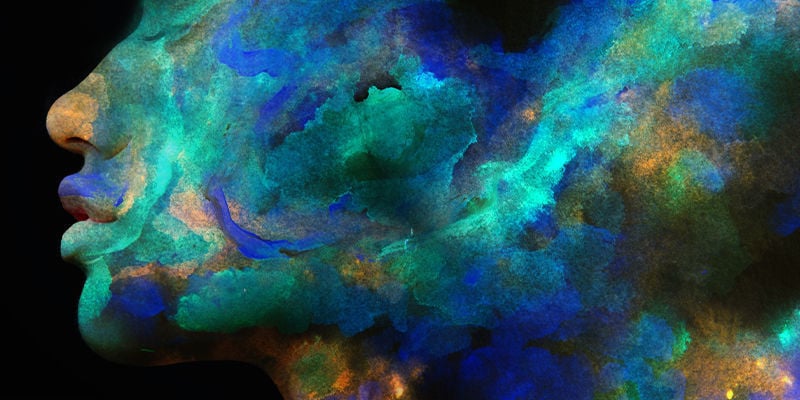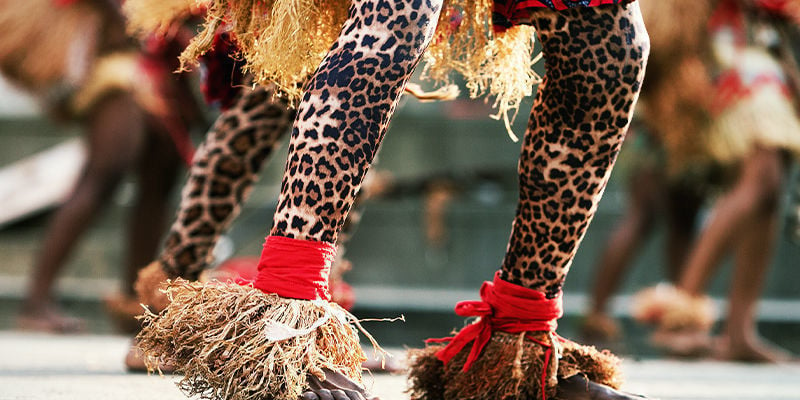
What Is Ibogaine?
Psychonauts are always after novel experiences. Despite being used in central Africa since times dating back further than we know, iboga and ibogaine are little-known elsewhere. This root contains powerful alkaloids that induce a strange, pensive trip that can last days. Here's what we know about it.
Iboga—more specifically, its constituent alkaloid ibogaine—is a powerful hallucinatory drug capable of inducing strange and insightful effects. Little-known beyond the Bwiti people of central Africa, it is a mystical root with potential holistic properties, and some scary statistics to go with them.
What is ibogaine?
Ibogaine is probably a drug you’ve not heard of. An alkaloid found in abundance in the roots of the iboga plant (Tabernanthe iboga), ibogaine is a strange and powerful psychedelic with effects that can last for weeks.
The iboga plant is found in central Africa, in countries such as Gabon and Cameroon, and is linked to the Bwiti culture. Used in traditional holistic and cultural practices, it is considered by some a ritualistic plant with spiritual healing properties.
However, iboga usage harks back to the pygmy tribes of central Africa. In the late 19th century, the Bantu people fled French Christian missionaries who were trying to eradicate tribal practices. Pygmy peoples shared the secrets of iboga with the Bantus, and from the combination of pygmy iboga usage, Bantu culture, and Christian beliefs, the Bwiti were born. For the Bwiti, iboga is an essential part of Christian practice, bringing them closer to God and Jesus.
The Difference Between Iboga and Ibogaine
Iboga is a shrub, but when people refer to iboga as a drug, they are specifically referring to the bark of the root. This is where the highest concentration of ibogaine is found, but it also contains 11 other alkaloids, such as tabernanthine, which some think are all essential to the properties of iboga.
Ibogaine is, however, considered to be the most important alkaloid in the iboga plant, and the one that could be considered its active ingredient. Ibogaine taken alone still induces long, psychedelic experiences. Some medical professionals have even identified ibogaine as the specific alkaloid that gives iboga its potential holistic properties.
That being said, there are significant differences between the iboga experience and the ibogaine experience. Though the following comparison can only go so far, it’s not entirely dissimilar to the difference between smoking extracted DMT and taking an ayahuasca concoction. For one thing, both ayahuasca and iboga are known to induce vomiting and “purging”, whereas ibogaine and DMT alone tend not to.
What is ibogaine like?

Ibogaine is converted to noribogaine in the body, and this interacts with many receptors, most predominantly sigma-2 receptors. It also has slight affinities for opioid receptors and serotonin receptors.
The high from ibogaine is complex and exhibits different effects depending on the dose. At lower doses, it causes stimulation and increased sensitivity to light and sound. At higher doses, it has oneirogenic effects, which means it causes waking dream-like effects.
Ibogaine is known to interact very badly (even fatally) with many substances. This is true of medications, but also food. Therefore, it is important to fast from many, if not all, foods for 24 hours prior to taking this drug.
The ibogaine experience has three distinct phases:
Phase 1
This phase begins around 1–3 hours after ingestion of iboga or ibogaine, and constitutes the major part of the “trip”. It lasts 4–8 hours. Often, it takes users into a panoramic waking dream, displaying visual landscapes and guiding the user through their memories. Iboga induces more powerful “trip” effects than isolated ibogaine.
At this stage, ataxia will be at its most prevalent. Users may find they have poor control over their muscles, and so it’s important to be in a very comfortable place where you won’t be disturbed. Going to the toilet can be an issue, so prepare for this.
Phase 2
This directly follows the first stage, and can last for between 8 and 20 hours. In this stage, users reflect upon what they experienced in the first part of the trip, often with a neutral and evaluative mindset. Hallucinatory experiences fade during this stage. Also, darkness and silence tend to be preferable, as external stimuli can be distracting and frustrating.
Phase 3
Things begin to return to normal now. However, residual evaluative thoughts and feelings can remain for up to 72 hours after taking ibogaine, and potentially for weeks after ingesting iboga.
How ibogaine is used

Traditionally, iboga is eaten as raw root bark, sometimes over a period of days. While taking small doses is common, large doses are saved for particular events, such as coming-of-age ceremonies or dealing with extreme trauma. It is often used as a communal drug.
Ibogaine explored
As you can see from its original discovery in Africa, ibogaine has had a rich history as part of many indigenous religious ceremonies. With its rich alkaloid content, there's little wonder as to why it's used in such settings as it can provide deep hallucinogenic and psychedelic reactions in a user. While its roots are based on these traditional and communal uses, ibogaine is not something that is seen often in the world today. That's not to say there are not things to learn from ibogaine; there have even been trials to utilise it as a means of curbing addictions. However, this research is in its infancy, and there are more studies required before we genuinely understand ibogaine's role in modern life.
-
 6 min
18 June 2021
The Six Types Of Hallucinations You Can Experience
We all know that psychedelic drugs can cause hallucinations, but what about the other causes? Mental illness, sleep deprivation, and even certain foods can trigger hallucinations as well. Ranging...
6 min
18 June 2021
The Six Types Of Hallucinations You Can Experience
We all know that psychedelic drugs can cause hallucinations, but what about the other causes? Mental illness, sleep deprivation, and even certain foods can trigger hallucinations as well. Ranging...
-
 3 min
9 February 2020
What Is Tripping On DMT Really Like?
DMT is a psychoactive compound known to produce intense auditory and visual hallucinations. When consuming DMT, many people feel as though they have left their body, the world, or have entered...
3 min
9 February 2020
What Is Tripping On DMT Really Like?
DMT is a psychoactive compound known to produce intense auditory and visual hallucinations. When consuming DMT, many people feel as though they have left their body, the world, or have entered...
-
 3 min
8 January 2020
Ayahuasca vs Magic Mushrooms: What’s the Difference?
Both magic mushrooms and ayahuasca have been used by people for centuries. Let's find out more about each of these mighty psychedelics and also see how they compare.
3 min
8 January 2020
Ayahuasca vs Magic Mushrooms: What’s the Difference?
Both magic mushrooms and ayahuasca have been used by people for centuries. Let's find out more about each of these mighty psychedelics and also see how they compare.
-
 9 min
19 April 2019
How To Prepare For A Safe Psychedelic Trip?
Here at Zamnesia, we want to make sure you have a good trip on your first plummet down the rabbit hole. Follow these guidelines whether you just want to giggle uncontrollably for a while or give...
9 min
19 April 2019
How To Prepare For A Safe Psychedelic Trip?
Here at Zamnesia, we want to make sure you have a good trip on your first plummet down the rabbit hole. Follow these guidelines whether you just want to giggle uncontrollably for a while or give...













 United States
United States










